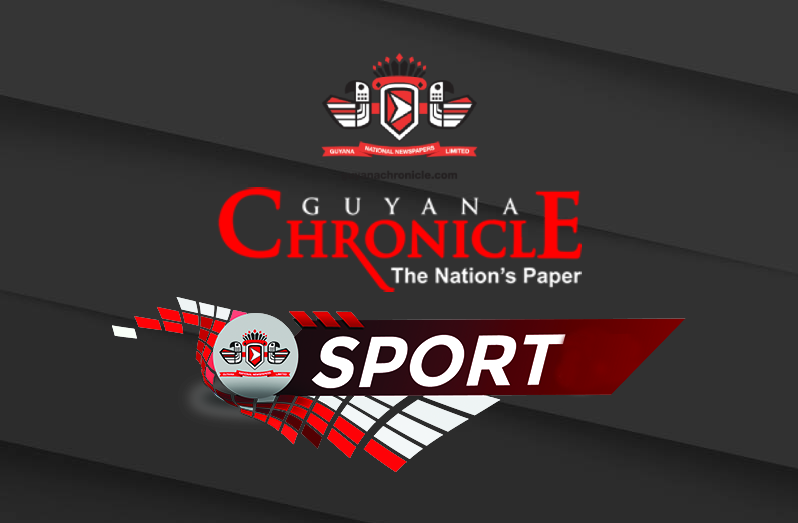Mr. Basketball pioneer Ken Corsbie dies….
By Joe Chapman
GUYANA’S renowned cultural icon by the name Ken Corsbie, passed in the United States of America last Monday at the age of 94.
Corsbie was a pioneer of basketball in Guyana, being a former National player and coach, Secretary of the British Guiana Basketball Association (BGBA) and also a National track and field athlete.
In fact, according to his close friend Joseph ‘Reds’ Perreira, Ken Corsbie helped introduce the game of basketball to British Guiana in 1954 at the home of the Taitt brothers Laurie and Clairmonte under a sapodilla tree, in Quamina Street, Georgetown, along with Joey and Peter Kaufman, Harry Dyatt, Rowman Savoury and Wilbert Holder.
These youths had been attracted to the game after seeing the ‘Go Man Go’ film at the Globe Cinema in Georgetown, which featured the world famous Harlem Globetrotters basketballers.
Speaking from his home in St. Lucia, the former Organisation of Eastern Caribbean States (OECS) Sports Officer and past Adviser to the Sports Minister in Guyana, Perreira related, “I think they saw that film as a group and they were highly excited. Those who went to Queens College and St. Stanislaus were not interested in cricket. They were interested in track and field and basketball was the new focus.”
However, Perreira said, “there were no basketball hard courts in Guyana. They picked up as much information as they could which was very scarce, not like now.”
Asked to describe the process, Perreira furthered, “they erected a ring on a sapodilla tree in the Taitt’s yard, which is now Cara Lodge in Quamina Street, and they went through their paces as they remembered what they saw in the Globe Cinema.”
Emerging from that early beginning were the Ravens and Panthers basketball clubs, Perreira noted, and a rivalry which never really stopped until the Panthers dropped out of competition.
In the early 1960s, based on newspaper clippings of the day, Ken Corsbie was described as ‘Mr. Basketball’ in British Guiana and Perreira when contacted said, “Ken was also one of the early players in the National Team that went to Suriname and got beaten by almost 70 points; Corsbie said it was an experience for the players.”
Perreira added that Ken Corsbie had the opportunity to coach Guyana against Suriname when Hewley Henry was the captain and they beat the Dutch team for the first time in Guyana.
Reflecting, ‘Reds’ said It was a historic landmark series where British Guiana (Guyana) defeated Dutch Guiana (Suriname) for the first time.
On April 11, 1962, British Guiana (Guyana) won over Dutch Guiana (Suriname) at the Chinese Court, Cosmos, taking the first game of the three-match series, with a comfortable, 64-42, victory led by its captain Hewley Henry who played well for his 14 game high points.
The second game ended with victory for Suriname, a 66-52 result where Hewley with eight points, supported the efforts of Brian Dummett who top scored with 11.
In the deciding third game British Guiana defeated Dutch Guiana in a ding-dong tussle, 61-60, with Henry again top scoring with 17 points.
That historic 1962 British Guiana basketball team comprised captain Henry, Eldon Vaughn, Ovid Jackson, Godfrey ‘Chin’ St. Hill, Binky Archer, Compton Nicholson, Brian Dummett, Orson Forbes, Rudolph ‘Speedy’ Franklyn, Joseph Small, Carl Sylvester and Walter Petrie.
Perreira then described Corsbie on the track as, “a good technical hurdler over 110 metres,” and recalled when he ran at the Barry Massay Olympiad Games in August against an international field in the mid-1950s.
That year of the Barry Massay Sr. August Olympiad, American track and field athlete, William Harrison “Bones” Dillard, who is the only male in the history of the Olympic Games to win gold in both the 100 metre (sprints) and the 110 metre hurdles, making him the “World’s Fastest Man” in 1948 and the “World’s Fastest Hurdler” in 1952, won the 110 metre hurdles, where among those who contested was Guyana’s Ken Corsbie at the Bourda Ground in the mid 1950s.
Perreira also informed that Corsbie was also a national high jumper, but did not do the Fosbury Flop, as he used the Western Roll while representing Guyana in Suriname.
But according to Perreira, the early days of athletics did not encourage hurdling.
Corsbie did also coach the St. Stanislaus High School in the Secondary Schools basketball tournaments, while he organised the sport at the club level for the BGBA, under the presidency of Sir Lionel Luckhoo.
However, back then in the 1950s and 1960s there were few basketball courts among them being the Police drill square, Queens College, Cosmos Chinese Court and the Henry/ Cameron Burnham Court, as it was until 1975 that the National Sports Hall was built.
It was in 1963 that Perreira remembered Corsbie spearheading a team called Guyana Celtics which “played in the fairly competitive South London League, comprising mostly of Guyanese players. These players included Corsbie, Lawrence Taitt, Orson Forbes, Terry Martins, Swen Amo, Michael Nobrega and Dicky Finnessa.
Importantly, Perreira reiterated that Corsbie’s pioneering efforts as a player, Coach and official among others, certainly impacted the early beginning of basketball in Guyana at the Taitt’s yard under a sapodilla tree, which young basketball players and administrators ought to know.




.jpg)









